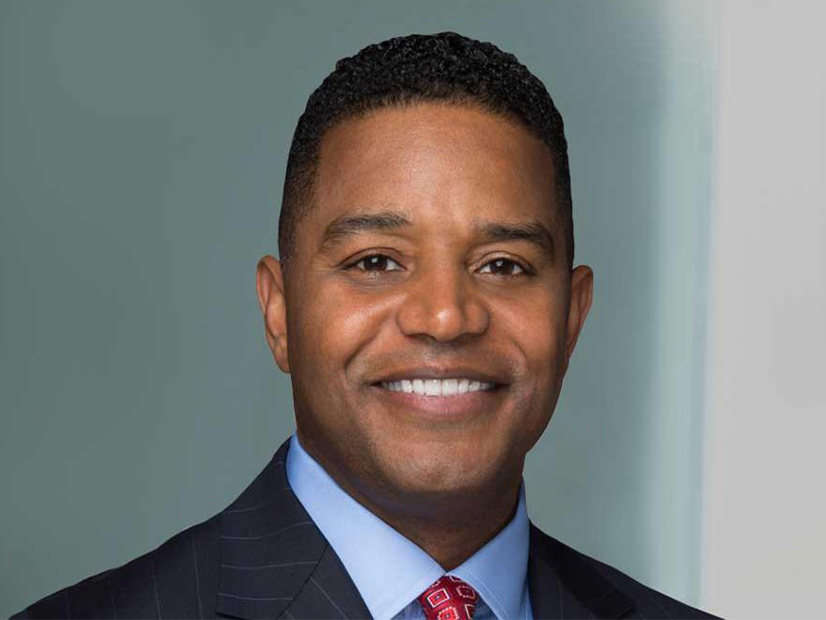Exelon is focused on meeting rising demand from data centers and manufacturing while also working with regulators to ensure that Commonwealth Edison’s integrated grid plan meets the requirements of the Illinois Climate and Equitable Jobs Act, company officials said during its second-quarter earnings call Aug. 1.
CEO Calvin Butler said a revised grid plan, filed in May, is on track for approval after the Illinois Commerce Commission rejected the original in December. The company has reached agreements with the city of Chicago, the Building Owners and Management Association, and environmental organizations, he said.
“These affirmations are good examples of what differentiates the process this year. Approval of the plan will ensure that Northern Illinois will receive the investment needed to maintain an affordable, resilient, reliable and clean grid for its customers and will support the state’s success in attracting new business,” Butler said.
CFO Jeanne Jones said data centers, energy-intensive manufacturing, economic development and electrification are leading to increased transmission spending over the next four years.
She said the growth is exemplified by a partnership between Exelon and Compass Datacenters to build one of the largest data centers in Illinois. She also noted the 235-acre Baltimore Peninsula mixed-use development, which includes 100 MW of load and is supported by rebuilding or constructing several new substations.
“This growth in high-density load, not just in data centers, but also in solar panel production, [electric vehicle] battery manufacturing, hydrogen production, quantum computing and other industries is one of several drivers for why our transmission spend increased by 45% in our four-year plan,” Jones said.
ComEd CEO Gil Quiniones said data center growth is likely to continue in the utility’s region.
“It’s been a robust market for data centers here in Illinois. We have over 5 GW in what we call engineering phase where data centers have paid us to start engineering their projects,” he said. “Some of them actually have made deposits so that we can order large equipment like transformers and breakers. And then behind that, we have another 13 GW in what we call prospects. So they’re not yet in engineering, but they are knocking on our doors, making inquiries very interested in coming to our jurisdiction.”
Exelon reported net income of $448 million ($0.45/share) in the second quarter, a 30.6% increase over that of the same period last year.
PJM Capacity Auction
A substantial increase in PJM capacity prices likely will push consumer rates up, Jones said, potentially leading to double-digit increases in the Baltimore Gas and Electric region, which reached its $466.35/MW-day price cap in the latest Base Residual Auction because of limited local capacity and constrained transmission. (See PJM Capacity Prices Spike 10-fold in 2025/26 Auction.)
Butler said Exelon and PJM have signaled concerns about future resource adequacy as baseload generation is replaced by renewable resources and load growth fueled by data centers.
“The price signals that we saw clearly indicate a need for infrastructure investments in our footprint, particularly in BGE, both generation and transmission,” he said.
Jones said utilities are working to keep costs down, such as with energy efficiency programs that have led to $9 billion in ComEd consumer savings since their inception in 2008. A ComEd rebate program also has facilitated the development of 1 GW of distributed energy resources.
Co-located Load
Butler discussed the utility’s protest of PJM’s request for FERC to amend the Susquehanna nuclear generator’s interconnection service agreement (ISA) to reduce the facility’s capacity interconnection rights (CIRs) and shift 480 MW of its output to a co-located data center (ER24-2172).
The ISA already contains language allowing 300 MW of the facility’s output to be dedicated to co-located load. (See Talen Energy Deal with Data Center Leads to Cost Shifting Debate at FERC.)
Exelon urged the commission to set the matter for hearing and argued that the proposed amendments do not address how the configuration would prevent the load from receiving energy from the PJM grid. It also said the configuration would create a new category of PJM load that does not yet exist in the governing documents and that it should be required to pay for ancillary grid benefits.
Butler said Exelon supports co-located load and data centers, but it should be recognized they benefit from being a part of the PJM grid and should pay for those services.
“Users of the grid should pay their fair share. And while there may be unique opportunities to leverage land and equipment at generation plants to get data centers online quickly, they are still connected to the grid and are benefiting from a host of services that the grid provides to serve all of the load connected to it,” he said.
Colette Honorable, Exelon’s executive vice president of public policy, said the company’s priority is making sure the rules for co-located load are equitable.
“Look, this demand is coming either way, whether it’s co-located or not,” said Honorable, a former FERC commissioner. “And our focus is making sure the investment gets done for the needs of our customers and that everyone has a fair and equitable allocation of the cost of using the grid. And I think that’s the bottom line.”



